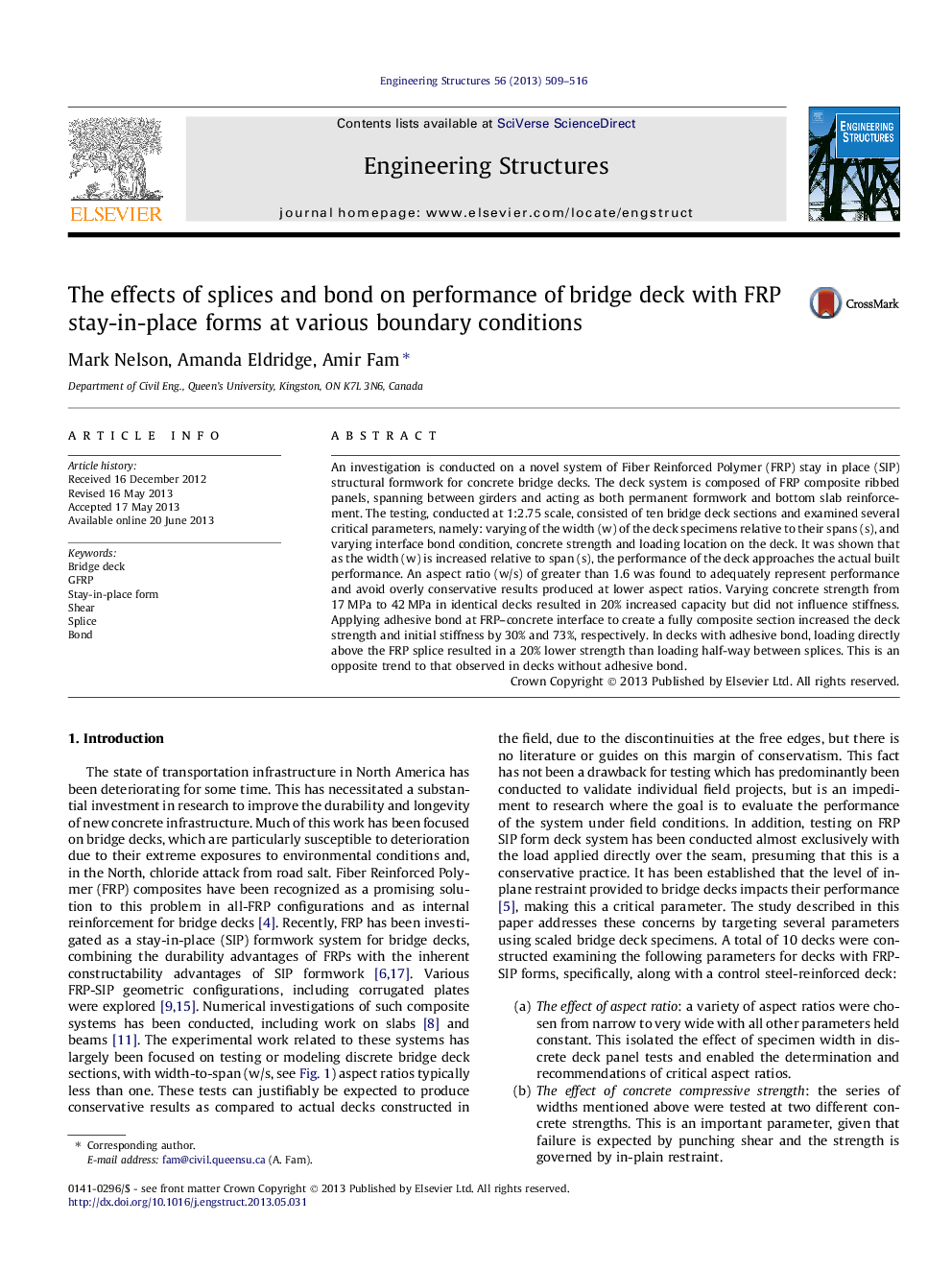| Article ID | Journal | Published Year | Pages | File Type |
|---|---|---|---|---|
| 6741347 | Engineering Structures | 2013 | 8 Pages |
Abstract
An investigation is conducted on a novel system of Fiber Reinforced Polymer (FRP) stay in place (SIP) structural formwork for concrete bridge decks. The deck system is composed of FRP composite ribbed panels, spanning between girders and acting as both permanent formwork and bottom slab reinforcement. The testing, conducted at 1:2.75 scale, consisted of ten bridge deck sections and examined several critical parameters, namely: varying of the width (w) of the deck specimens relative to their spans (s), and varying interface bond condition, concrete strength and loading location on the deck. It was shown that as the width (w) is increased relative to span (s), the performance of the deck approaches the actual built performance. An aspect ratio (w/s) of greater than 1.6 was found to adequately represent performance and avoid overly conservative results produced at lower aspect ratios. Varying concrete strength from 17Â MPa to 42Â MPa in identical decks resulted in 20% increased capacity but did not influence stiffness. Applying adhesive bond at FRP-concrete interface to create a fully composite section increased the deck strength and initial stiffness by 30% and 73%, respectively. In decks with adhesive bond, loading directly above the FRP splice resulted in a 20% lower strength than loading half-way between splices. This is an opposite trend to that observed in decks without adhesive bond.
Keywords
Related Topics
Physical Sciences and Engineering
Earth and Planetary Sciences
Geotechnical Engineering and Engineering Geology
Authors
Mark Nelson, Amanda Eldridge, Amir Fam,
